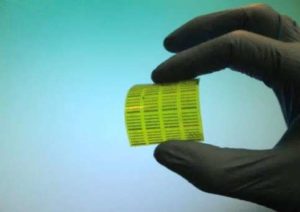Results 1 to 1 of 1
-
04-06-2017, 04:23 PM #1Administrator

- Join Date
- Oct 2016
- Posts
- 2,028
Flexible 3D Printed Memory Devices
Memory devices, which make up a subset of electronic functions including displays, logic, and sensors, have been gradually becoming more flexible, which is a good thing. But historically, not many people have worried too much about their integration and ease of fabrication in low performance applications. But this attitude could soon be changing, due to the recent additive manufacturing work by a group of researchers from both INRS-EMT in Canada and Germany's Munich University of Applied Sciences (MUAS). The use of additive manufacturing in memory device fabrication can get rid of material removal steps and complex lithography, without causing the feature size to shrink - this isn't critically important for all memory devices, but certainly for the ones needed for more "computationally demanding uses." The joint research group published a paper in the journal Applied Physics Letters, titled "Fully inkjet printed flexible resistive memory," which describes their proof of concept using inkjet printing, which has been used with digital memory technology before, and resistive memory (ReRAM). Read more at 3DPrint.com: http://3dprint.com/170261/inkjet-am-memory-devices/





 Reply With Quote
Reply With Quote



QIDI Slicer "Plater" is...
04-12-2024, 02:21 AM in QiDi 3D Printer Forum